Relaxed Jeans haben die Modewelt im Sturm erobert und bieten eine Kombination aus Komfort und Stil, die eine breite Palette von Verbrauchern anspricht. Dieser Artikel befasst sich mit den Markttrends, den wichtigsten Akteuren und den Zukunftsaussichten von Relaxed Jeans und beleuchtet ihre wachsende Beliebtheit und die Faktoren, die diesen Trend vorantreiben.
Table of Contents:
-Marktübersicht: Der Aufstieg der Relaxed Jeans
-Die Komfort-Revolution: Materialien und Stoffe
-Weich und strapazierfähig: Die besten Stoffe für Relaxed Jeans
-Nachhaltige Entscheidungen: Umweltfreundliche Materialien in entspannten Jeans
-Design und Schnitt: Die perfekte Passform für jeden Körper
-Von High Waist bis Low Rise: Beliebte Schnitte bei Relaxed Jeans
-Auf Komfort zugeschnitten: Innovative Designmerkmale
-Saisonalität und Trends: Wann trägt man Relaxed Jeans?
-Das ganze Jahr über attraktiv: Relaxte Jeans für jede Jahreszeit stylen
-Trend Alert: Aktuelle Modetrends beeinflussen Relaxed Jeans
-Kultureller Einfluss und Erbe: Die Geschichte hinter Relaxed Jeans
-Von der Arbeitskleidung zum Mode-Basic: Die Entwicklung der Relaxed Jeans
-Globaler Einfluss: Wie verschiedene Kulturen lässige Jeans annehmen
-Abschluss
Marktübersicht: Der Aufstieg der Relaxed Jeans
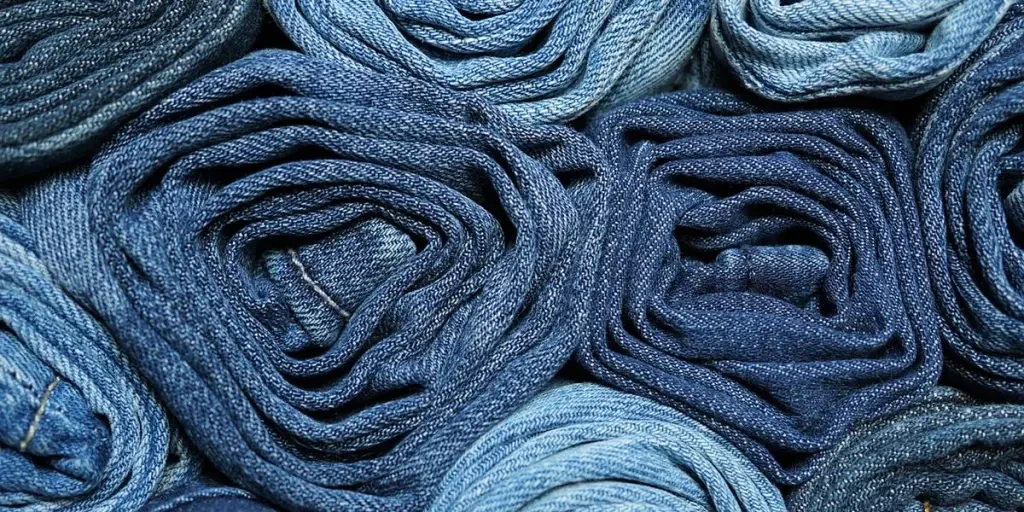
Der Markt für Relaxed-Fit-Jeans hat in den letzten Jahren ein deutliches Wachstum erlebt, das auf den Trend zu bequemeren und vielseitigeren Kleidungsoptionen zurückzuführen ist. Laut einem Bericht von WGSN werden Relaxed-Fit-Jeans und Loose-Fit-Jeans im Jahresvergleich leicht an Beliebtheit gewinnen und erfreuen sich vor allem bei jüngeren Verbrauchern einer deutlichen Beliebtheitssteigerung. Dieser Trend spiegelt sich in der Zunahme von Neuerscheinungen bei Cargo-Jeans wider, die auf allen E-Commerce-Plattformen im Jahresvergleich in Großbritannien um 22 % und in den USA um 108 % zunahmen.
Einzelhändler profitieren von diesem Trend, indem sie eine Vielzahl entspannter Jeans-Styles anbieten, um den unterschiedlichen Vorlieben der Kunden gerecht zu werden. So hat Uniqlo beispielsweise „weite, gerade“ Schnitte eingeführt, während Marken wie Hollister und Gap sich auf traditionellere „Baggy“- oder „lockere“ Schnitte konzentrieren. Diese Styles sind besonders bei jungen Menschen beliebt, wie der Anstieg der TikTok-Aufrufe für #CargoJeans um 59 % im Vergleich zum Vorjahr zeigt.
Trotz des wachsenden Interesses an Relaxed Jeans gibt es einige Herausforderungen, denen sich Einzelhändler stellen müssen. Laut WGSN waren Relaxed Jeans diese Saison im Online-Handel unterdurchschnittlich, was Einzelhändler dazu veranlasste, neue Wege zu erkunden, um diese Silhouette zu vermarkten. Werbung für Relaxed-Versionen von Slim-Fit-Jeans zielt auf den konservativen Verbraucher ab, der vor allem bei US-amerikanischen und europäischen Marken im mittleren Preissegment zu finden ist.
Auch die Farbleistung von Relaxed Jeans spielt eine entscheidende Rolle für ihren Markterfolg. Modefarben wie Braun, Grün und Neutraltöne haben in dieser Saison eine starke Performance gezeigt, während Schwarz und Weiß im Vergleich zum Vorjahr einen Rückgang ihres Anteils verzeichneten. Klassischer Blue Denim bleibt ein Grundnahrungsmittel, wobei Raw Denim und Vintage Fades für die Saison Herbst/Winter 2025/26 voraussichtlich beliebt sein werden.
Zu den wichtigsten Akteuren auf dem Markt für Relaxed-Jeans zählen bekannte Marken wie Madewell, C&A, WE, Faherty und Jack & Jones. Diese Marken haben die Nachfrage nach bequemem und modischem Denim erfolgreich bedient und bieten eine Reihe von Relaxed-Fits an, die den unterschiedlichen Bedürfnissen der Verbraucher gerecht werden.
Die Zukunft der Relaxed Jeans sieht vielversprechend aus, da mehrere Trends den Markt prägen werden. Laut WGSN wird die Ästhetik der Arbeitskleidung weiterhin Einfluss auf das Design von Relaxed Jeans haben, wobei übertriebene Carpenter-Styles und praktische Details wie Cargo-Taschen an Bedeutung gewinnen. Darüber hinaus gibt es ein wachsendes Interesse an nachhaltigen und umweltfreundlichen Materialien, da sich die Verbraucher ihrer Umweltauswirkungen immer bewusster werden.
Die Komfort-Revolution: Materialien und Stoffe
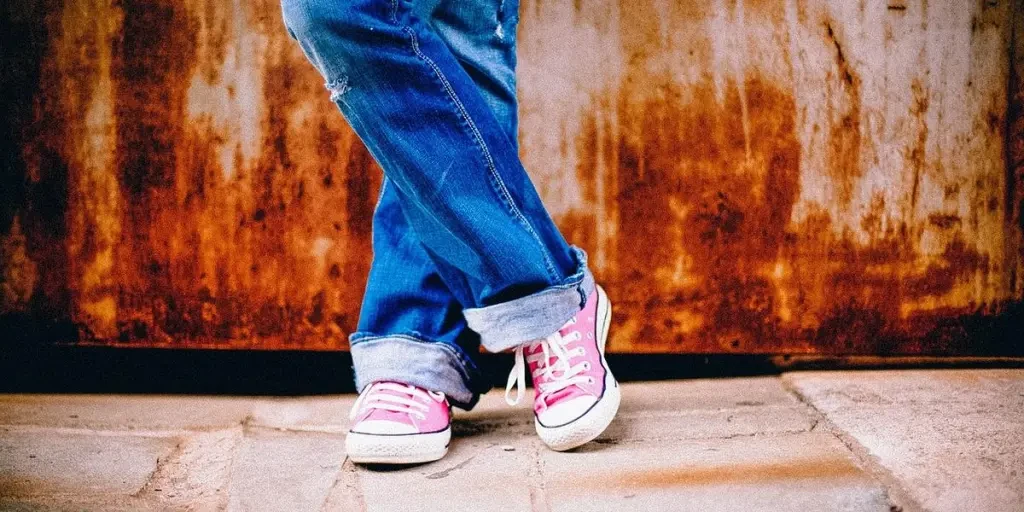
Weich und strapazierfähig: Die besten Stoffe für Relaxed Jeans
Die Komfortrevolution in der Bekleidungsindustrie hat die Materialien und Stoffe, die in Relaxed Jeans verwendet werden, erheblich beeinflusst. Der Schwerpunkt liegt auf der Kombination von Weichheit und Strapazierfähigkeit, um sicherzustellen, dass sich die Jeans nicht nur gut anfühlt, sondern auch lange hält. Einem professionellen Bericht zufolge ist die Verwendung von leichten Textilien wie Baumwollmischungen, Tencel und Modal immer beliebter geworden. Diese Stoffe bieten eine weiche Haptik und behalten gleichzeitig die für den Alltag erforderliche Festigkeit.
Baumwolle bleibt ein Grundstoff in der Denim-Produktion, aber Innovationen in der Stofftechnologie haben zur Entwicklung von Baumwollmischungen geführt, die den Komfort und die Flexibilität von Relaxed Jeans verbessern. So sorgt beispielsweise die Einarbeitung von Elastan oder Spandex in Baumwollstoffe für die nötige Elastizität und ermöglicht so mehr Bewegungsfreiheit. Diese Kombination ist besonders vorteilhaft für Relaxed Jeans, die im Vergleich zu herkömmlichem Denim eine bequemere Passform bieten sollen.
Darüber hinaus hat die Verwendung von Tencel, einem nachhaltigen Stoff aus Holzzellstoff, an Bedeutung gewonnen. Tencel ist für seine Weichheit, Atmungsaktivität und feuchtigkeitsableitenden Eigenschaften bekannt, was es zu einer idealen Wahl für lässige Jeans macht. Modal, ein weiterer umweltfreundlicher Stoff aus Buchenholz, wird ebenfalls wegen seiner seidigen Textur und Haltbarkeit geschätzt. Diese Materialien erhöhen nicht nur den Tragekomfort lässiger Jeans, sondern tragen auch zur wachsenden Nachfrage nach nachhaltiger Mode bei.
Nachhaltige Entscheidungen: Umweltfreundliche Materialien in Relaxed Jeans
Nachhaltigkeit ist zu einem zentralen Thema in der Modebranche geworden, und die Produktion von Relaxed Jeans bildet hier keine Ausnahme. Die Verwendung umweltfreundlicher Materialien nimmt zu, da die Verbraucher nach umweltfreundlicheren Produkten verlangen. Einem Bericht zufolge gehören die Better Cotton Initiative (BCI), die nach dem Global Organic Textile Standard (GOTS) zertifizierte Bio-Baumwolle und die nach dem Global Recycled Standard (GRS) zertifizierte recycelte Baumwolle zu den bevorzugten nachhaltigen Materialien für Relaxed Jeans.
BCI-Baumwolle wird mit Methoden produziert, die die Umweltbelastung verringern und die Lebensgrundlage der Bauern verbessern. GOTS-zertifizierte Bio-Baumwolle stellt sicher, dass die Baumwolle ohne den Einsatz schädlicher Chemikalien angebaut wird, was ein gesünderes Ökosystem fördert. Bei GRS-zertifizierter recycelter Baumwolle hingegen werden Post-Consumer- oder Post-Industrial-Abfälle verwendet, wodurch der Bedarf an Rohmaterialien verringert und Textilabfälle minimiert werden.
Neben Baumwolle werden auch andere nachhaltige Materialien wie Hanf und recyceltes Polyester in lässige Jeans eingearbeitet. Hanf ist eine äußerst nachhaltige Pflanze, die nur wenig Wasser und Pestizide benötigt, was sie zu einer umweltfreundlichen Alternative zu herkömmlicher Baumwolle macht. Recyceltes Polyester, das aus Plastikflaschen und anderen recycelten Materialien hergestellt wird, trägt dazu bei, Plastikmüll zu reduzieren und den CO2-Fußabdruck der Denim-Produktion zu verringern.
Design und Schnitt: Die perfekte Passform für jeden Körper
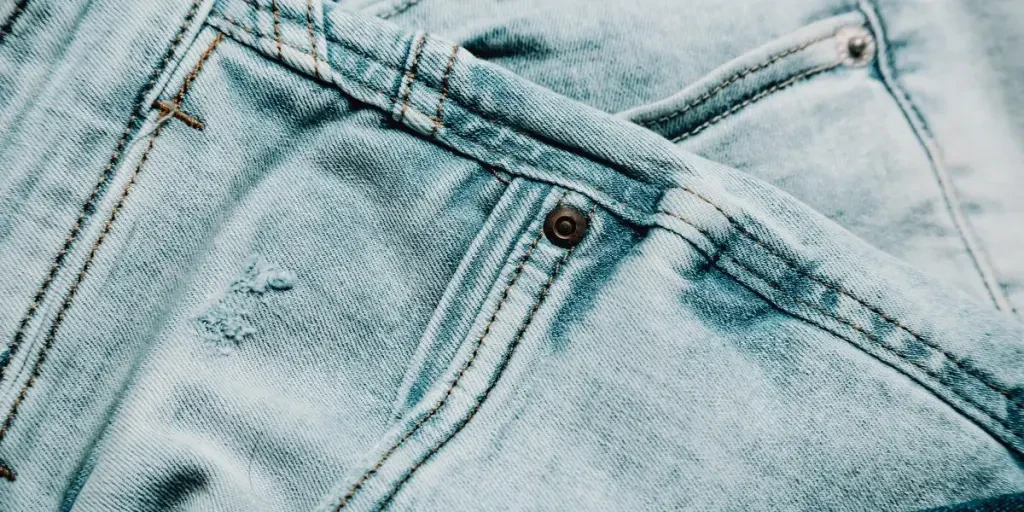
Von High-Waist bis Low-Rise: Beliebte Schnitte bei Relaxed Jeans
Das Design und der Schnitt von Relaxed Jeans spielen eine entscheidende Rolle für ihre Attraktivität und Vielseitigkeit. Verschiedene Schnitte sind auf unterschiedliche Körpertypen und Stilvorlieben abgestimmt und sorgen dafür, dass für jeden die perfekte Passform dabei ist. Relaxed Jeans mit hoher Taille erfreuen sich aufgrund ihrer schmeichelhaften Silhouette und ihrer Fähigkeit, die Beine optisch zu verlängern, großer Beliebtheit. Dieser Schnitt wird besonders von denen bevorzugt, die einen Vintage-inspirierten Look suchen, da er an die Stile der 70er und 90er Jahre erinnert.
Low-Rise-Relaxed-Jeans hingegen bieten einen eher lässigen und entspannten Look. Dieser Schnitt sitzt bequem auf den Hüften und bietet eine entspannte Passform, die sich ideal für den Alltag eignet. Mid-Rise-Relaxed-Jeans schaffen einen Mittelweg zwischen beiden und bieten eine bequeme Passform, die knapp unter der natürlichen Taille sitzt. Dieser vielseitige Schnitt eignet sich für eine Vielzahl von Körpertypen und kann problemlos eleganter oder lässiger getragen werden.
Laut einem Bericht sind gerade und weite Schnitte auch in der Kategorie der Relaxed Jeans beliebt. Relaxed Jeans mit geradem Bein bieten eine klassische Silhouette, die sowohl zeitlos als auch vielseitig ist. Dieser Schnitt bietet eine ausgewogene Passform, die weder zu eng noch zu locker ist, und ist daher eine beliebte Wahl für alle, die einen eleganten und dennoch bequemen Look suchen. Relaxed Jeans mit weitem Bein hingegen zeichnen sich durch eine dramatischere und modischere Ästhetik aus. Dieser Schnitt bietet höchsten Komfort und fließende Passform und ermöglicht mehr Bewegungsfreiheit und ein mutiges Statement.
Auf Komfort zugeschnitten: Innovative Designmerkmale
Innovative Designmerkmale wurden in die Relaxed Jeans integriert, um deren Komfort und Funktionalität zu verbessern. Ein solches Merkmal ist die Verwendung von Kleidungsstückfärbungen, die für einen sanfteren Farbeffekt und einen getragenen Look sorgen. Diese Technik sieht nicht nur ansprechend aus, sondern sorgt auch dafür, dass sich die Jeans vom ersten Tragen an bequem anfühlt.
Ein weiteres bemerkenswertes Designmerkmal sind praktische Details wie breite Bündchen, Einsätze und mehrere Taschen. Diese Elemente verleihen der Jeans nicht nur einen praktischen Aspekt, sondern tragen auch zu ihrer Gesamtästhetik bei. Breite Bündchen und Einsätze können beispielsweise einen strukturierteren und maßgeschneiderteren Look erzeugen, während mehrere Taschen zusätzlichen Komfort zum Tragen wichtiger Dinge bieten.
Die Verwendung von Schnittkanten und Used-Look-Texturen ist ein weiterer Trend, der sich im Design von Relaxed-Jeans widerspiegelt. Diese Details verleihen einen DIY-inspirierten, abgenutzten Look, der diejenigen anspricht, die einen eher lässigen und sympathischen Stil suchen. Laut einem Bericht ist dieser Trend besonders bei Verbrauchern der Generation Z beliebt, die bei ihrer Modewahl Wert auf Authentizität und Individualität legen.
Saisonalität und Trends: Wann trägt man Relaxed Jeans?
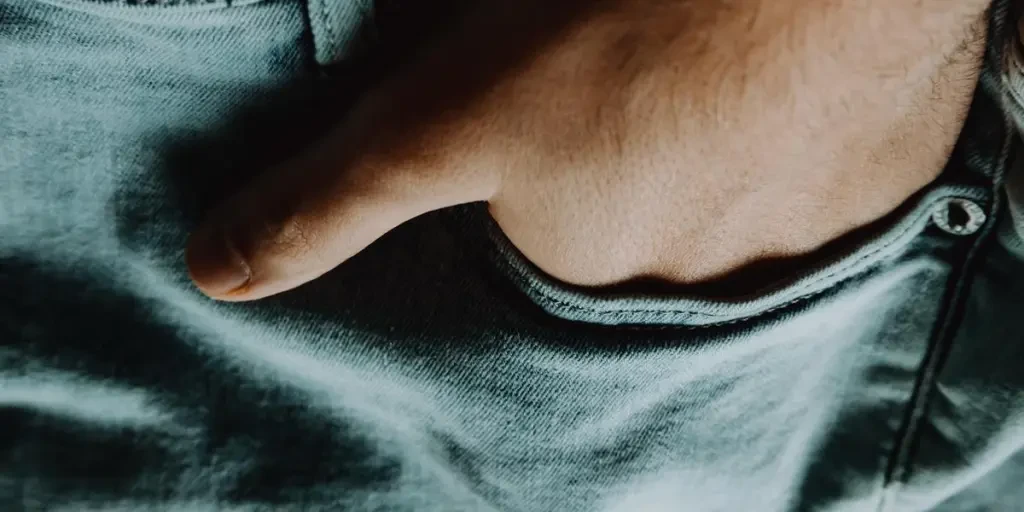
Ganzjahres-Appeal: Relaxte Jeans für jede Jahreszeit stylen
Relaxed Jeans sind das ganze Jahr über ein Hingucker und daher eine vielseitige Ergänzung für jede Garderobe. Sie passen sich den verschiedenen Jahreszeiten und Styling-Optionen an und sind daher das ganze Jahr über ein Must-have. In den wärmeren Monaten können Relaxed Jeans mit leichten Oberteilen und Sandalen kombiniert werden, um einen lässigen und luftigen Look zu kreieren. Die Verwendung leichterer Stoffe und Waschungen wie Eisblau und Elektroindigo verleiht dem Outfit eine frische und sommerliche Ausstrahlung.
In den kühleren Monaten können lässige Jeans mit kuscheligen Pullovern, Jacken und Stiefeln kombiniert werden, um ein mehrlagiges und wärmeres Ensemble zu erhalten. Dunklere Waschungen wie Mitternachtsblau und intensives Rostrot sorgen für ein satteres und herbstlicheres Gefühl. Das Hinzufügen von Accessoires wie Schals und Mützen kann den saisonalen Reiz lässiger Jeans noch weiter steigern.
Trend-Alarm: Aktuelle Modetrends beeinflussen Relaxed Jeans
Aktuelle Modetrends haben einen erheblichen Einfluss auf das Design und die Popularität von Relaxed Jeans. Einem Bericht zufolge dominiert weiterhin die Nachfrage nach geräumigeren Silhouetten, wobei Baggy- und Wide-Leg-Styles die Nase vorn haben. Dieser Trend wird durch den Wunsch nach Komfort und einem entspannten Lebensstil sowie eine Anspielung auf die Nostalgie der 90er Jahre angetrieben.
Auch die Verwendung von Vintage-inspirierten Details wie hohen Taillen und Taschen im Western-Stil beeinflusst das Design von Relaxed Jeans. Diese Elemente verleihen der Jeans einen Retro-Touch und sprechen damit diejenigen an, die eine Mischung aus klassischem und zeitgenössischem Stil suchen. Darüber hinaus hat der Trend zu Denim-on-Denim-Looks, bei denen passende Denim-Teile miteinander kombiniert werden, an Bedeutung gewonnen. Dieser Trend bietet eine raffinierte Interpretation von Freizeitkleidung und verbindet Funktionalität mit zukunftsorientiertem Design.
Kultureller Einfluss und Erbe: Die Geschichte hinter Relaxed Jeans
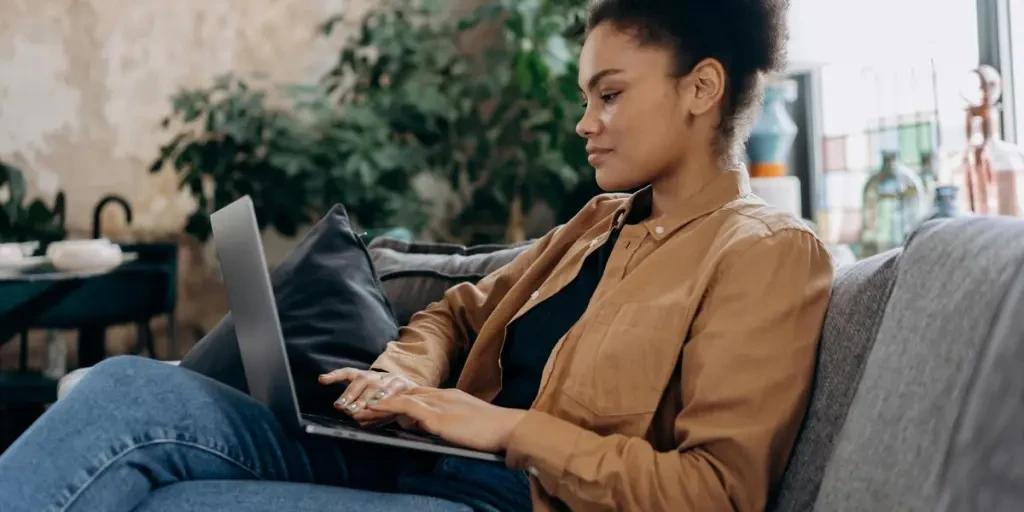
Von der Arbeitskleidung zum Modeklassiker: Die Entwicklung der Relaxed Jeans
Relaxed Jeans haben eine reiche Geschichte, die bis zu ihren Ursprüngen als Arbeitskleidung zurückreicht. Ursprünglich für Arbeiter und Bergleute entworfen, wurden Jeans wegen ihrer Haltbarkeit und Zweckmäßigkeit geschätzt. Im Laufe der Zeit wandelten sie sich von funktionaler Arbeitskleidung zu einem Mode-Grundnahrungsmittel, das von verschiedenen Subkulturen und Modebewegungen angenommen wurde.
Die Entwicklung der Relaxed Jeans lässt sich über verschiedene Epochen hinweg verfolgen, von den rebellischen Styles der 50er und 60er Jahre bis hin zu den entspannten und lässigen Looks der 90er Jahre. Jedes Jahrzehnt brachte seinen eigenen, einzigartigen Einfluss mit sich und prägte das Design und die Popularität der Relaxed Jeans. Auch heute noch sind sie ein vielseitiges und zeitloses Kleidungsstück, das sowohl ihre Tradition als auch zeitgenössische Modetrends widerspiegelt.
Globaler Einfluss: Wie verschiedene Kulturen lässige Jeans annehmen
Relaxed Jeans haben eine globale Anziehungskraft und werden von verschiedenen Kulturen auf der ganzen Welt getragen. In den Vereinigten Staaten werden sie oft mit einem entspannten und lässigen Lebensstil in Verbindung gebracht, der die Liebe des Landes zu Komfort und Zweckmäßigkeit widerspiegelt. In Europa werden Relaxed Jeans mit einem eleganteren und raffinierteren Touch gestylt und oft mit maßgeschneiderten Stücken und Accessoires kombiniert.
In Asien sind Relaxed Jeans von der Streetwear und Jugendkultur beeinflusst, wobei der Schwerpunkt auf gewagten und experimentellen Designs liegt. Die Verwendung einzigartiger Waschungen, Verzierungen und Lagentechniken verleiht den Jeans einen unverwechselbaren und zeitgenössischen Touch. Dieser globale Einfluss unterstreicht die Vielseitigkeit und Anpassungsfähigkeit von Relaxed Jeans und macht sie zu einem universellen Mode-Grundnahrungsmittel.
Fazit
Relaxed Jeans haben sich von ihren bescheidenen Anfängen als Arbeitskleidung zu einem Mode-Grundnahrungsmittel entwickelt, das in Kulturen weltweit beliebt ist. Ihre Kombination aus Komfort, Haltbarkeit und Vielseitigkeit sorgt dafür, dass sie das ganze Jahr über attraktiv sind, während innovative Designmerkmale und nachhaltige Materialien den Ansprüchen des modernen Verbrauchers gerecht werden. Während sich Modetrends weiterentwickeln, werden Relaxed Jeans zweifellos ein wichtiger Akteur in der Bekleidungsindustrie bleiben und eine perfekte Mischung aus Tradition und zeitgenössischem Stil bieten.
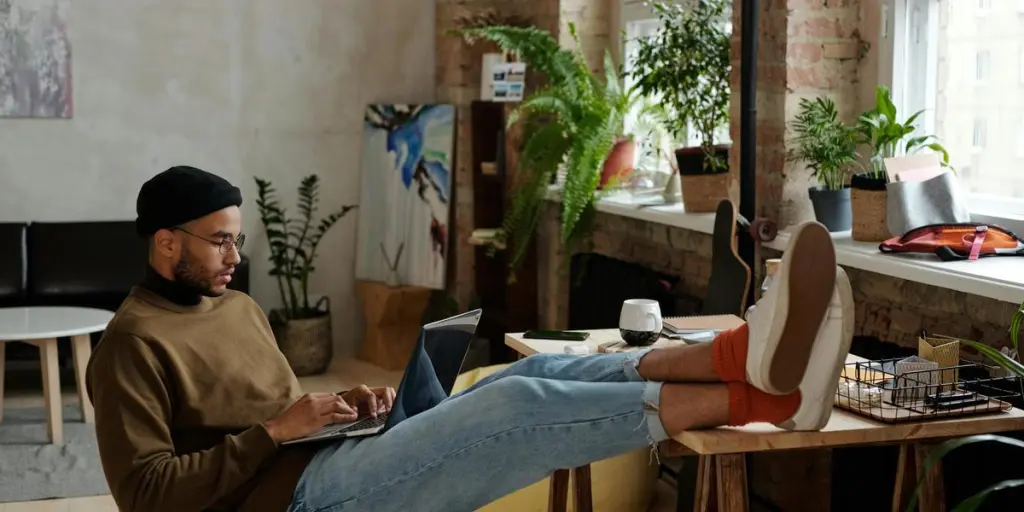




 Afrikaans
Afrikaans አማርኛ
አማርኛ العربية
العربية বাংলা
বাংলা Nederlands
Nederlands English
English Français
Français Deutsch
Deutsch हिन्दी
हिन्दी Bahasa Indonesia
Bahasa Indonesia Italiano
Italiano 日本語
日本語 한국어
한국어 Bahasa Melayu
Bahasa Melayu മലയാളം
മലയാളം پښتو
پښتو فارسی
فارسی Polski
Polski Português
Português Русский
Русский Español
Español Kiswahili
Kiswahili ไทย
ไทย Türkçe
Türkçe اردو
اردو Tiếng Việt
Tiếng Việt isiXhosa
isiXhosa Zulu
Zulu